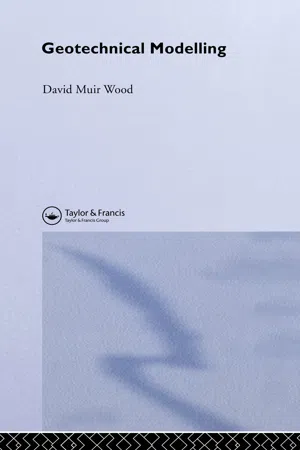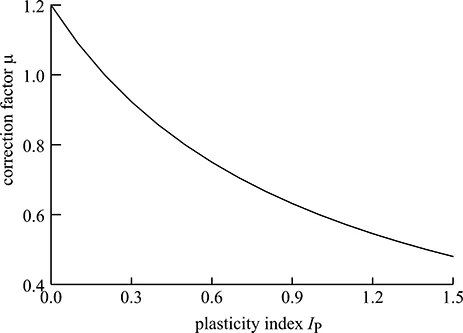
- 504 pages
- English
- ePUB (mobile friendly)
- Available on iOS & Android
Geotechnical Modelling
About this book
Modelling forms an implicit part of all engineering design but many engineers engage in modelling without consciously considering the nature, validity and consequences of the supporting assumptions.
Derived from courses given to postgraduate and final year undergraduate MEng students, this book presents some of the models that form a part of the typical undergraduate geotechnical curriculum and describes some of the aspects of soil behaviour which contribute to the challenge of geotechnical modelling.
Assuming a familiarity with basic soil mechanics and traditional methods of geotechnical design, this book is a valuable tool for students of geotechnical and structural and civil engineering as well as also being useful to practising engineers involved in the specification of numerical or physical geotechnical modelling.
Frequently asked questions
- Essential is ideal for learners and professionals who enjoy exploring a wide range of subjects. Access the Essential Library with 800,000+ trusted titles and best-sellers across business, personal growth, and the humanities. Includes unlimited reading time and Standard Read Aloud voice.
- Complete: Perfect for advanced learners and researchers needing full, unrestricted access. Unlock 1.4M+ books across hundreds of subjects, including academic and specialized titles. The Complete Plan also includes advanced features like Premium Read Aloud and Research Assistant.
Please note we cannot support devices running on iOS 13 and Android 7 or earlier. Learn more about using the app.
Information
1
Introduction to modelling
1.1 Introduction
1.2 Empirical models

1.2.1 Vane strength correction



Table of contents
- Cover
- Half title
- Title Page
- Copyright Page
- Table of Contents
- Preface
- 1 Introduction to modelling
- 2 Characteristics of soil behaviour
- 3 Constitutive modelling
- 4 Numerical modelling
- 5 Physical modelling
- 6 Centrifuge modelling
- 7 Theoretical modelling
- 8 Soil-structure interaction
- 9 Envoi
- Bibliography
- Index